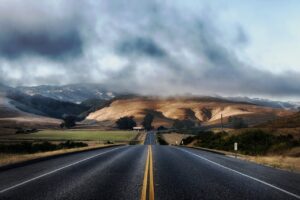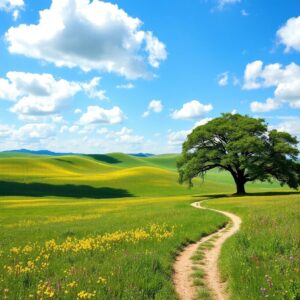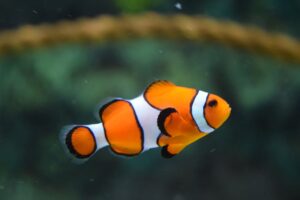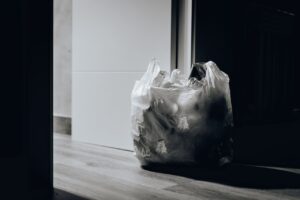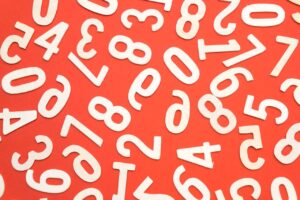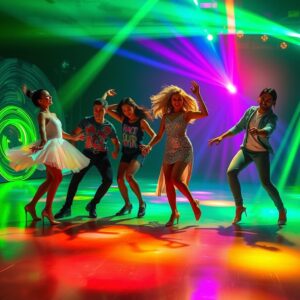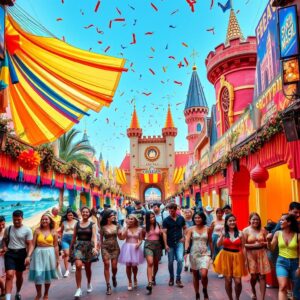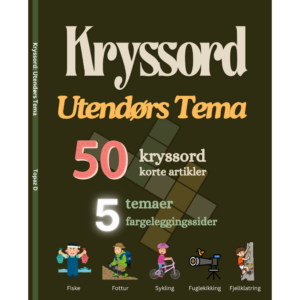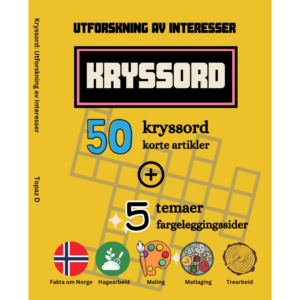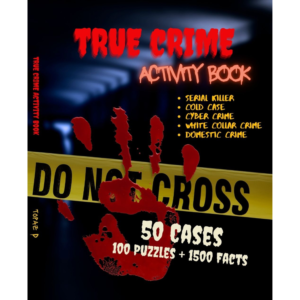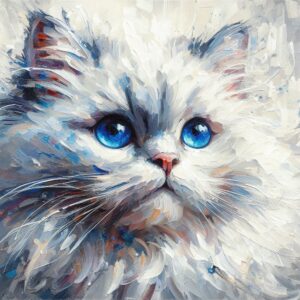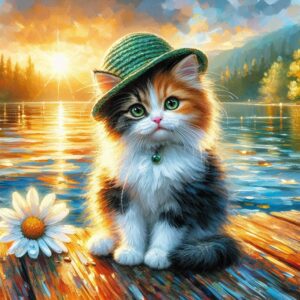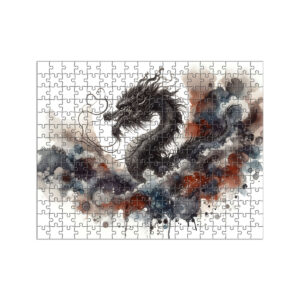
Explore & Play
Discover interesting topics and solve the accompanying crossword puzzle.
Sprite Crossword | World of sprites and folklore
Table of Contents
Sprite Crossword
You can either fill in the crossword puzzle directly on this page or click the button in the bottom right corner to print it for free.
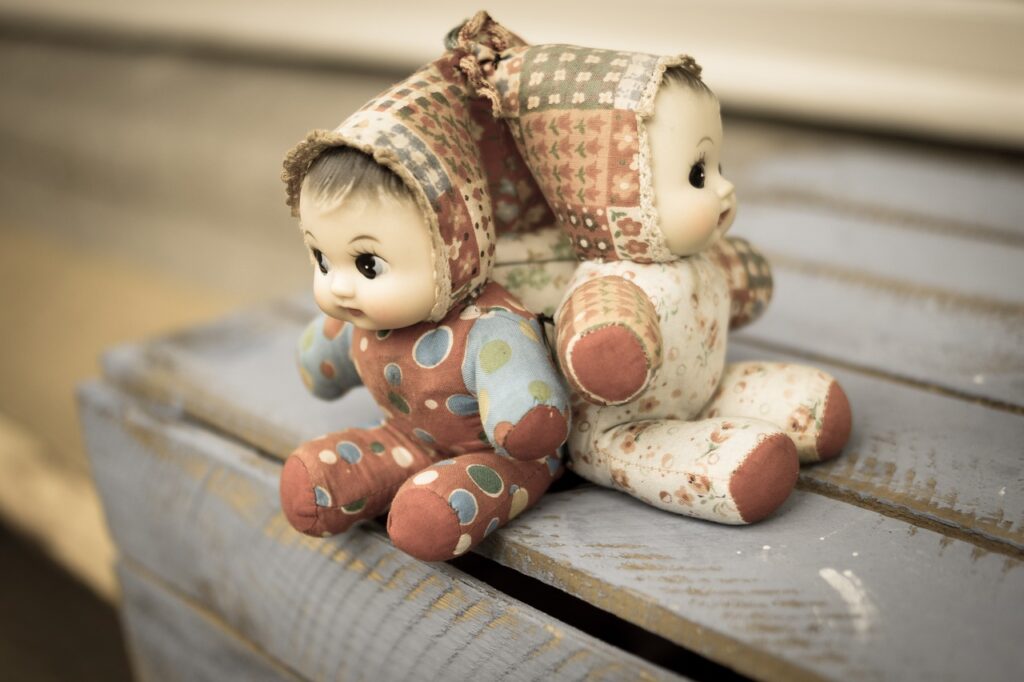
Exploring the Supernatural: From Sprites to Wendigos in Folklore and Mythology
From sprites dancing in the moonlight to the eerie wail of a wendigo, supernatural beings have long captured our imaginations, providing rich and diverse stories across cultures. These creatures, ranging from mischievous fairies to terrifying spirits, serve as metaphors for the unknown, the mystical, and the mysterious forces of nature. The tales of sprites, elves, and other beings have been passed down through generations, deeply ingrained in folklore and mythology.
In this article, we will explore a variety of supernatural beings, from the playful sprites to the dread-inducing wendigos, uncovering their significance in folklore across different cultures. Along the way, we’ll touch upon a crossword puzzle featuring these very creatures, allowing readers to engage with the words in an interactive way. Whether you’re a fan of mythology or simply intrigued by these fascinating beings, there’s much to discover.
1. The Origins of Supernatural Beings
1.1 Ancient Roots of Mythical Creatures
The origins of supernatural beings can be traced back to the earliest human civilizations, where myths began to explain the mysteries of the world. Early humans, living in a world full of wonders and dangers, created stories to make sense of their environment. These stories gave birth to gods, spirits, and otherworldly creatures that influenced every aspect of life. These beings were seen as guardians of the natural world, protectors of the unseen realms, or even punishers of those who defied the laws of nature.
In many cultures, creatures like sprites, elves, and trolls originated as representations of the forces of nature. These mythological beings explained natural phenomena such as storms, the change of seasons, and the flow of rivers. In Nordic folklore, trolls were believed to inhabit mountains and caves, while in Celtic legends, fairies and nymphs were said to live in forests and lakes.
1.2 The Universal Nature of Folklore
Although supernatural creatures may differ in name and appearance, they share common traits across various cultures. In almost every society, mythological beings appear as both helpers and tricksters, representing the duality of nature. For instance, the concept of water spirits can be found in almost every culture, from the Greek sirens to the Scottish kelpies.
Creatures like elves, dryads, and sprites appear throughout many cultures, despite geographical distances and cultural differences. These beings embody the human need to explain and personify nature’s mysteries, whether as guardians of the forest or mischievous beings causing mischief. In the crossword puzzle, terms like nymphs, pucks, and changelings reflect these universal qualities and their global reach.
2. Sprites, Fairies, and Other Mischievous Beings
2.1 The Enigmatic Sprite: Guardian or Trickster?
Sprites, small and often elusive, are among the most intriguing of mythical beings, said to inhabit forests, lakes, and even homes. Sprites have the ability to blend in with nature, making them both guardians of the earth and tricksters who meddle in human affairs. In many legends, they are seen as ethereal spirits who guide travelers through dangerous forests or mislead them to their doom.
Often depicted as mischievous, sprites are not bound by the rules that govern the human world. They are known for their playful antics, which can range from harmless pranks to more dangerous tricks, such as leading wanderers into the wild or playing with the elements. This dual nature makes them both charming and treacherous, much like the other beings that populate the world of mythology.
In the crossword puzzle, words like “pixies,” “brownies,” and “changeling” reflect this mischievous spirit. These creatures often share traits with sprites, playing pranks on humans or swapping children in the dead of night.
2.2 Fairies: The Magic of the Fey Realm
Fairies have long been depicted as ethereal creatures, weaving magic and mystery into the world of humans. They are seen as beings with magical powers, able to bless or curse those they encounter. Often associated with the natural world, fairies can be found in forests, meadows, and even gardens, where they maintain the delicate balance between the natural and supernatural worlds.
In Celtic mythology, fairies were believed to be the souls of the dead or spirits of nature, responsible for protecting the Earth’s cycles. They were both revered and feared, as their powers could both heal and harm. The concept of the fairy is vast, with variations across cultures, from the helpful leprechauns of Irish folklore to the darker, more menacing fairies of European tales.
In the crossword, the term “fae” is often used as a catch-all for the various types of fairies, highlighting their pervasive influence across mythologies and stories.
2.3 Other Mischievous Spirits: Imps and Pucks
Imps and pucks are perhaps the most playful of all supernatural beings, often causing chaos and delight wherever they go. These small, impish creatures are known for their ability to shape-shift and their love of mischief. In Shakespeare’s A Midsummer Night’s Dream, Puck is a well-known character who delights in causing confusion among the lovers in the forest, demonstrating the trickster nature of these creatures.
Imps, similarly, are small, impish figures that thrive on causing trouble, often serving as the embodiment of mischievous spirits. These beings have appeared in various folklore, often with the goal of creating chaos or teaching humans a lesson. Much like sprites and fairies, they inhabit the spaces between worlds, blurring the line between reality and the supernatural.
3. Dark and Terrifying Supernatural Creatures
3.1 Goblins and Trolls: The Fearsome Denizens of Folklore
While fairies and sprites are often whimsical, goblins and trolls are the embodiments of fear in many folk tales. In folklore, goblins are typically malicious creatures, often depicted as small, ugly beings that lurk in caves, forests, or under bridges. They are known to kidnap children, steal treasures, or create havoc wherever they go.
Trolls, larger and more terrifying, are often seen as the guardians of hidden treasures, lurking in mountains or under bridges, waiting to pounce on unsuspecting travelers. Both goblins and trolls serve as representations of the darker side of nature, challenging the boundaries between civilization and the wild.
These creatures, like the ones featured in the crossword, evoke fear and caution. The image of a troll hiding beneath a bridge or a goblin scurrying through the forest reflects the dangers that mythologies have used to keep people vigilant and aware of the unknown.
3.2 The Haunting Banshee: A Wailing Spirit of Death
The banshee’s mournful wail has been a chilling omen of death in Irish and Scottish folklore for centuries. Often depicted as a woman dressed in white, the banshee is said to foretell the death of a family member by her haunting cries. Her role as a harbinger of death has made her one of the most feared figures in Celtic mythology.
The banshee is both a warning and a reminder of the fragility of life. While some myths depict her as a benevolent figure, most portray her as a ghostly presence that cannot be ignored. Her mournful cries echo in the night, signaling the end of a life and the beginning of a new journey.
4. Water Spirits and Creatures of the Deep
4.1 Kelpies and Other Water Spirits
The kelpie, a shape-shifting creature of Scottish folklore, is just one example of the many water spirits that haunt our legends. Kelpies are often depicted as horses that can transform into other creatures, using their powers to drown unsuspecting victims. These water spirits are believed to inhabit lakes and rivers, serving as a reminder of the dangers hidden beneath calm waters.
Similar creatures, such as the Scottish selkies, the Finnish vättar, and the Russian rusalki, are also part of a broader tradition of water spirits. These beings can be both helpful and harmful, depending on their moods and the actions of those who encounter them.
4.2 Sirens and Their Alluring Songs
The siren’s haunting melody has lured countless sailors to their doom, making them one of the most infamous creatures in mythology. Originating in Greek mythology, sirens are beautiful creatures with the ability to sing songs that ensnare sailors, causing them to crash their ships into the rocks.
Over time, the siren myth has evolved, with some cultures depicting them as dangerous seductresses while others see them as tragic figures. Despite the variations, their songs remain a powerful symbol of temptation and destruction.
5. The Role of Mythical Creatures in Shaping Human Behavior
5.1 Protectors and Guides: The Positive Side of Supernatural Beings
Not all supernatural creatures are malicious; many serve as protectors or guides for humans in times of need. Elves, often seen as wise and kind-hearted, are known to assist travelers, protect the forests, and share knowledge. Brownies and other helpful spirits are said to keep homes clean and provide protection.
These benevolent creatures demonstrate the dual nature of the supernatural world. While they may be mischievous at times, their overall role is to help and guide. In many cultures, they are seen as guardians of the natural order, ensuring balance and harmony.
5.2 The Dark Side: Creatures of Fear and Caution
On the darker side of folklore, beings like the wendigo and ghostly apparitions remind us of our deepest fears. These creatures often embody the consequences of human transgression, serving as a warning to those who dare to break cultural or moral codes. The wendigo, for example, is said to represent greed and cannibalism, a symbol of the destructive power of hunger and isolation.
6. From Folklore to Modern Popular Culture
6.1 How Folklore Shaped Fantasy Literature and Films
The creatures of folklore have not only been a part of oral traditions but have also become central characters in modern fantasy literature and films. J.R.R. Tolkien’s The Lord of the Rings features elves, trolls, and goblins as central characters, while the Harry Potter series brought fairies, pixies, and other supernatural creatures into popular culture.
These ancient beings continue to inspire modern creators, shaping the way we think about fantasy worlds. From the playful to the terrifying, these creatures are re-imagined for new generations in stories of adventure, magic, and heroism.
6.2 The Evolving Image of Supernatural Beings in Pop Culture
The image of supernatural beings has evolved over time, with creatures once feared now becoming heroes or anti-heroes in modern tales. Elves, fairies, and even dragons are often portrayed as complex characters, no longer simply symbols of good or evil. This shift reflects a broader understanding of mythology, where characters are no longer black and white but full of nuance and complexity.
Conclusion: Engaging with the Supernatural
Supernatural beings, with their rich histories and fascinating qualities, continue to captivate our imaginations. Whether mischievous sprites, benevolent fairies, or terrifying trolls, these creatures remind us of the mysteries and wonders of the natural world. They challenge us to question the boundaries between the known and unknown, often acting as metaphors for our deepest fears, desires, and questions.
Share to...
I hope you enjoy the content.
Want to receive our daily crossword puzzle or article? Subscribe!
You may also be interested in
Share to…
Want to receive our daily crossword puzzle?
-
Jigsaw Puzzles
Blue-Eyed Kitten Puzzle Delight 250 | 300 | 500 Pieces
kr 348,00 – kr 439,00Price range: kr 348,00 through kr 439,00 Select options This product has multiple variants. The options may be chosen on the product page -
Jigsaw Puzzles
Cat & Sunset Wooden Jigsaw Puzzle 250 | 300 | 500 Pieces
kr 348,00 – kr 439,00Price range: kr 348,00 through kr 439,00 Select options This product has multiple variants. The options may be chosen on the product page -
Jigsaw Puzzles
Chinese Dragon Jigsaw Puzzle – Zodiac Series Art 250 | 300 | 500 Pieces
kr 348,00 – kr 439,00Price range: kr 348,00 through kr 439,00 Select options This product has multiple variants. The options may be chosen on the product page



